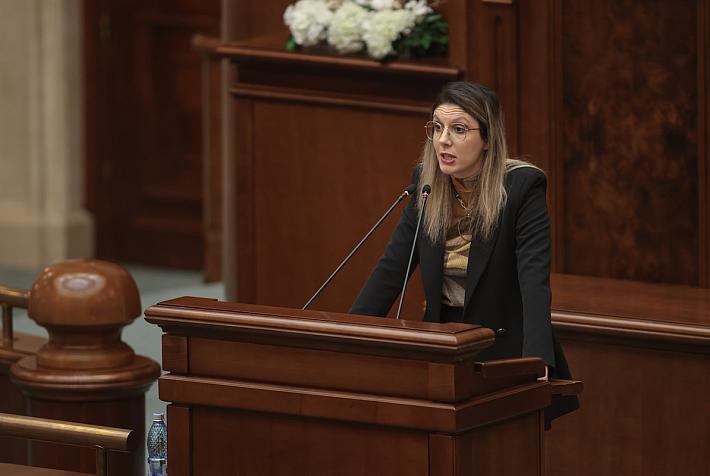French research minister to visit Romania, wants to see ELI laser project

The French Minister for Higher Education and Research Geneviève Fioraso (in picture) is interested in the Magurele laser project and is planning to visit Romania in September. The comments were made during Romania's Higher Education and Research Minister Mihnea Costoiu's visit to France to discuss the development of research projects and strategic partnerships between Romania and France.
“During my meeting with [...] Geneviève Fioraso, we discussed the development of bilateral relations in research and higher education, as well as encouraging the sharing of good practice in higher education and public strategies for coordinating research,” said Mihnea Costoiu quoted by local news agency Mediafax. The Minister also said that Fioraso's interest in the Extreme Light Infrastructure-Nuclear Physics (ELI-NP) project incited him to invite Fioraso to Romania. “The invitation was accepted, Geneviève Fioraso's visit will take place in September this year, the perfect opportunity to closely examine the Extreme Light Infrastructure - Nuclear Physics ELI-NP project, in which she was very interested,” said Costoiu.
Romania's Higher Education and Research Minister also met with François Weil, Rector of the Academy of Paris, Alain Fuchs, President of the National Center for Scientific Research, and Pascale Briand, Director General of the National Agency for Research. During his visit to France, Costoiu went to Bordeaux where he visited laser research centers and met with the regional representative for Aquitaine Michel Beylot.
Building work got underway on June 14 for the new superlative busting ultra-powerful lasers, which live up to their name, Extreme Light Infrastructure-Nuclear Physics (ELI-NP). What will become the world’s biggest and most powerful lasers are to be sited in Magurele, near Bucharest, and in a first phase, the highly specialized buildings needed to house the lasers will be constructed.
Representatives from the Romanian government and the EU attended the inauguration event on June 14, including European Commissioner for Regional Policy Johannes Hahn, Prime Minister Victor Ponta, Minister of Education Remus Pricopie, Minister for Higher Education, Scientific Research and Technological Development Mihnea Costoiu, Secretary of State for Education Tudor Prisecaru and the head of the Horia Hulubei Institute of Physics and Nuclear Engineering Nicolae Victor Zamfir.
The tender for construction work was awarded to a consortium led by Austrian group Strabag’s, which also includes Zublin and Aedificia Carpathians. Costoiu told Mediafax that Strabag previous experience in high-tech construction helped the group secure the contract, which the international engineering group won with an offer of just under EUR 65.5 million. The first stage is scheduled for completion in 2014, after which the lasers themselves will be constructed and the facility should be operational sometime in 2017.
Each of the lasers will have a 10PW power rating, or 10 trillion watts. The 10PW power rating is equal to 10 times the total installed power capacity in the world and to run the lasers for one second would require the total power produced by the world’s power stations over a two week period. However, the lasers will be fired for incredibly short periods of time – a millionth of a billionth of a second – thus cutting down the project’s electricity bill a little.
Two other facilities are being built in Hungary and the Czech Republic, with the whole program receiving financial backing via EU Structural Funds. The Romanian site will focus on laser based nuclear physics, according to the ELI project organizers, “for this purpose, an intense gamma-ray source is foreseen by coupling a high-energy particle accelerator to a high-power laser.”
The total cost of the Romanian ELI-NP facility is estimated at slightly over EUR 356.2 million, with EU funds covering 83 percent of the amount and the remainder supplied by the Romanian state. Funding will be granted in a number of phases over the coming years.
ELI is a European Project, involving nearly 40 research and academic institutions from 13 EU Member Countries, forming a pan-European facility, that aims to host the most intense lasers in the world.
The facility, based on four sites, has obtained a financial commitment exceeding EUR 700 million. The EC has funded the first ELI-pillar, in the Czech Republic, with a budget of just under EUR 290 million.
editor@romania-insider.com
photo source: enseignementsup-recherche.gouv.fr












